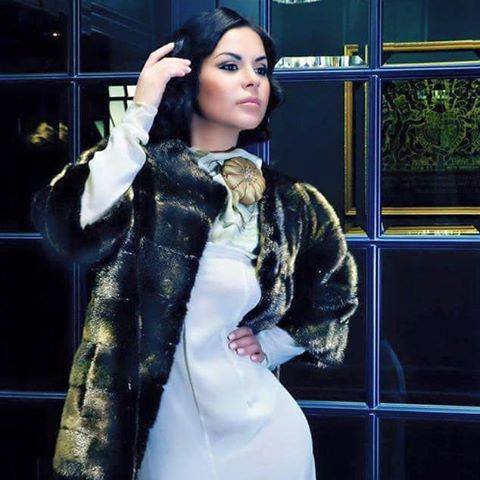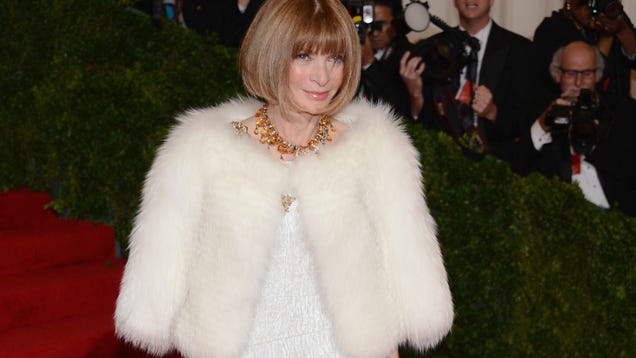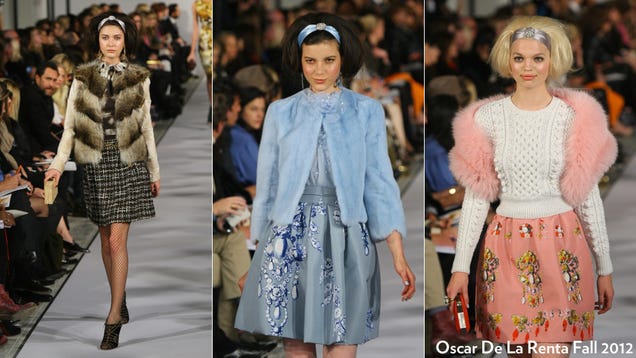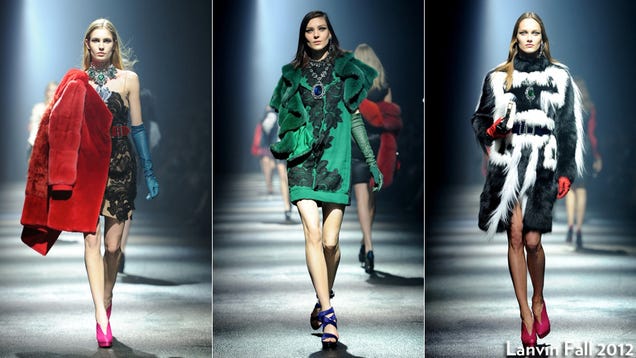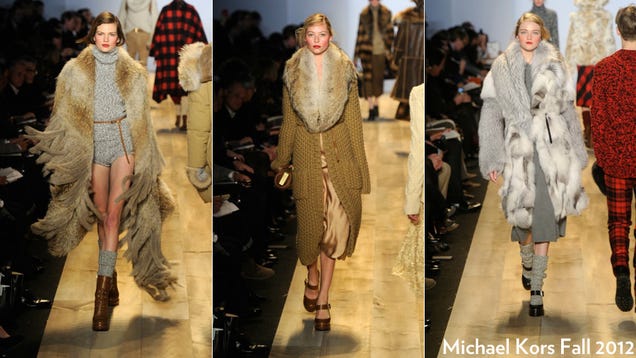Never one to take himself too seriously, Karl Lagerfeld once deadpanned: “I’m not very gifted for hairdos.” He was referring to his signature snow-white ponytail, which he has worn since the mid-Seventies and has become visual shorthand for the designer’s personage.
Yet when it comes to the hair of animals, Lagerfeld is a magician and a scientist, continually exploring new techniques and pushing the boundaries of design with one of the world’s most precious — yet still divisive — materials.
This story first appeared in the July 8, 2015 issue of WWD. Subscribe Today.
Still restless and driven after half a century designing fur and ready-to-wear at Fendi, Karl Lagerfeld will unveil his most expansive experiment yet during Paris Couture Week: an Haute fourrure show for the Roman house, putting fur on fashion’s most prestigious stage — and securing Lagerfeld, the couturier at Chanel for more than 30 years, another coup: the only designer to stage two high-fashion shows in one week.
Fendi is making a big deal of the milestone, not only mounting the show but publishing a box-bound Steidl tome, “Fendi by Karl Lagerfeld,” packed with the German designer’s colorful sketches.
Eyes fixed on fashion’s horizon, Karl Lagerfeld is practically allergic to anniversaries and backward glances. In a wide-ranging conversation, he shared his vast knowledge of fur production and design, strong opinions about men in mink, and the virtues of sketching by hand.
ADVERTISING
WWD: Will Haute fourrure become a permanent part of the couture week?
Karl Lagerfeld: I don’t know if we will do it every season. You see, it’s not on my contract, so I don’t know. I’m too busy, perhaps to do it all the time. And there’s a problem because there are hardly any skins left, you know.
I remembered 30 years ago, and we made a finale with 20 sable coats. If you want to do that today, you’re lucky to make one or two or three because most of the animals are not hunted anymore. It’s quite challenging to do high fashion because everything made in the past hardly exists, so we have to invent unbelievable techniques and mix them with feathers and other things like that because the world has changed. We are not in the Eighties anymore.
WWD: Is the scarcity of beautiful fur that serious?
K.L.: They’re rarer and rarer. That means the activists don’t have
to be too angry because there is less and less, and it becomes more and more expensive. The sable coat today is costly like people pay less for a house than for a sable coat. It’s unbelievable!
The techniques I invented in the Seventies and Eighties to make fur coats light and with expensive fur can now be done with less costly furs.
WWD: Is the creative process for fur the same as RTW or couture?
K.L.: Yes, because I’m one of the few left who sketches everything himself, and when you come to the studio, you can see that the photos taken of the dresses and the sketches are the same. I’m able to put it on paper in 3-D nearly, so they can read the design and show me toiles that are perfect. I don’t know how others do with computers or draping materials; I don’t do that, I have a vision, and I put it on a paper, and they translate.
Computer sketches I don’t even look at: they all look the same — this is the end of a personal style. By contrast, sketching is like writing — you have your handwriting, and if you sketch with the hand, it’s always better.
Also, I explain to the atelier what I want. My sketches also come with technical explanations. I’m very professional, you know.
WWD: Had you designed anything with fur before you started working for Fendi?
K.L.: We did a few fantasy coats at Chloé: three or four little coats in rabbit in the Sixties because that was the trend of the moment, but you can’t call this fur. When the Fendi sisters asked me to work with them, I said, “You know I don’t like the bourgeois mink, but if you do a fantasy line called Fendi Fun…” because that was the idea at the beginning. The double-F was Fendi Fun. That’s how it started, and two years later, I did everything, and the double-F became the logo of the house. Today it’s essential to have a logo because some people from the other countries can’t read the name. I cannot read Chinese names, but everybody can identify a logo. That’s why logos are so famous. The high-fashion things can be, in a way, more eccentric than you would show at ready-to-wear, because you know, I’m very much against ready-to-wear shows when you see things you’ll never see in the shops. I hate creativity for nothing, only for the press. I think that is the opposite of what fashion is supposed to do. You don’t have to be low-commercial because I don’t think my collections are so lowly commercial. I believe they are just right for the moment if I could be pretentious.
WWD: Do you see Haute fourrure as something innate to Fendi and Rome — in the same way, that couture is closely linked to Paris?
K.L.: Fur for me is something Italian because, in France, I never do fur. There are not many great fur people here, and their technique is essential compared to what I’m used to.
WWD: Do you prefer designing winter furs or summer furs?
K.L.: Summer furs, they hardly exist, but now furs are also bought by the hot countries. They put the air-conditioning in their houses to under zero, and then they can wear the fur. I don’t overthink about seasons, you know, because it’s warm and cold in the world, in different moments.
WWD: In working with fur, is the fabric limiting in any way, and does this limitation inspire you?
K.L.: No, no, no. I don’t want to sound pretentious, but I invented a lot with furs so I can handle that as long as I have good workrooms to work with. I see it as another material: velvet or fur, it’s the same thing. It’s just another technique, it’s something else, as tweed is also something else. My process of thinking is extraordinary because I have these kind of visions and I put them on paper, and it’s very bizarre. And this even improves with age.
WWD: Was fur very fusty and bourgeois when you started?K.L.: It was horrible, horrible, because remember even in the Seventies and still in the Eighties, especially in Italy, they had all floor-length mink coats that were not beautiful and very heavy to wear.
WWD: Did you ever meet a pelt you didn’t like?K.L.: Oh, many. I never liked panther because I thought it was stiff. I even never liked it printed on fur; I also never liked all the things that were forbidden, not because they are forbidden, because I don’t like them, I don’t think they are flattering. My favorite furs are sable and ermine: ermine because it’s so liquid and sable because it’s warm. They are the most flattering furs.
WWD: What are some of the wackiest experiments you’ve tried with fur?
K.L.: Oh yes, trying 20 different furs together cut into strips and knitted and things like this. I did that in the Nineties, but I don’t remember that much. Don’t ask me too much about the past. For me, it’s about doing, and it’s not about what I have done. I hate anniversaries.
WWD: So you rely on the atelier to interpret your sketches and technical requirements?
K.L.: When they cannot do it exactly the way I thought, they find another way. It’s a very creative way to work together. I’m always very close to the workroom.
It’s not only the idea, but it’s also the technique and finding the right people to do it, because there are not so many people left, and trained well enough. You cannot do this with amateurs.
We do samples; we try to work out things together, to mix and make it look completely different because the great thing about fur today is that it mostly doesn’t look like fur anymore. I even like the allure of mixing fake fur with real fur. Nothing should be forbidden.
WWD: Have you ever worn fur yourself?
K.L.: In the Sixties, but never after. My house is too heated for a sable bed cover, but I think fur covers can be lovely.
WWD: Do you think it looks good on men, or should they approach with caution?
K.L.: It depends who you are, if you’re Liberace, maybe it’s OK, but I’m not too crazy for fur on men. As a lining in cold countries, why not? Although they can make you look fat. Very soft, beautiful coats — I think they are feminine. There were too many rock stars and people in the Sixties who used to wear fur, and if you look at the pictures today, it’s very tacky. But you know, in the Sixties, it was anything goes.
WWD: Fur has roared back to popularity in recent years. How do you account for that? Is it just a fashion trend, or do you think there’s something else at play?
K.L.: You know, trends come and go, so there are no rules. For the moment, people like fur, but they like fur as a fantasy, not as a status symbol. It’s not something you buy to show how rich you are, or as an investment. That I hate, but that kind of coat they don’t make anymore.
WWD: Which women, past or present, wore fur with the most celebrated panache?
K.L.: Look at the old issues of Vogue, fur was the chicest thing in the world, especially in the Twenties and Thirties, when they used a lot of ermine — nothing to do with what they did later. At that time, the fur was much more beautiful and lighter. In the Forties and Fifties, they were just horrible, stiff, and old.
In the Twenties, fur was treated like a material. There was a French fur designer named Max Leroy, and he did beautiful furs. There is a gorgeous old catalog that exists of sketches by a man called Eduardo Benito. And Madeleine Vionnet did handsome furs.
WWD: Where did the idea come for those fun and frivolous fur bag bugs, and especially the Karlito one that looks like you?
K.L.: Because I’m a cartoon, my dear. I’m comfortable, everybody can recognize me, and it’s beautiful. I can’t even cross the street anymore, anywhere, for all the tourists, all the selfies. It’s unbelievable, and I don’t know how it happened — it’s so strange, this fame thing. But as my fortune-teller told me when I was young, she said: “For you, it will start when it’s finished for the others.” It’s quite right.

